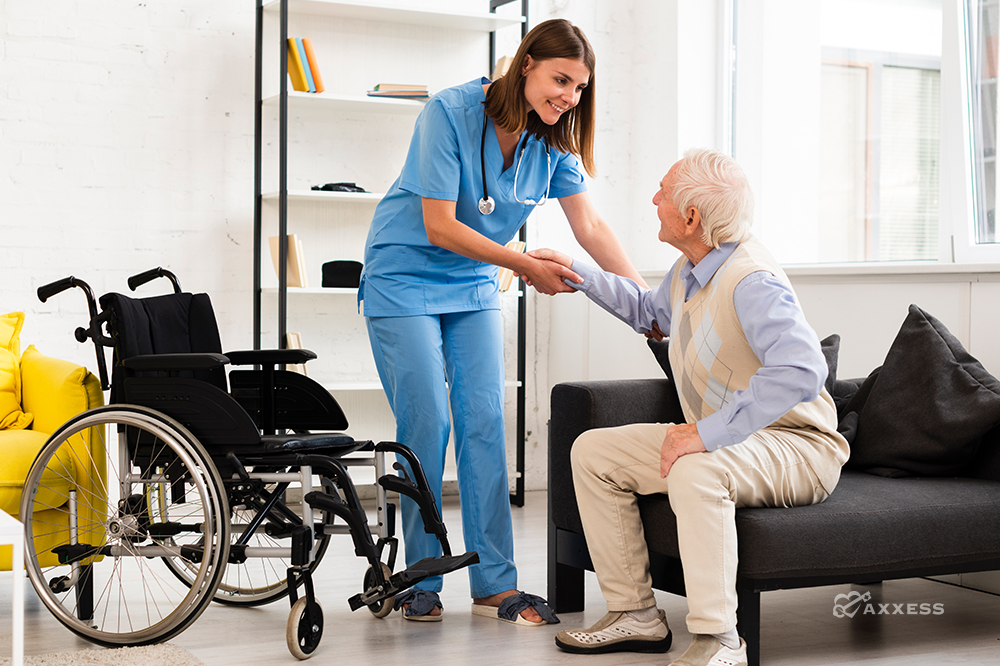
Falls can cause much more than broken bones and bruises. They can cause hospital stays, a loss of independence, or even death. Not all falls cause a serious injury, but one out of five falls does. These types of injuries include broken bones, typically wrist, arm, ankle or hip fractures. Falls can also cause head injuries, which can be very serious, especially if the person is taking certain medications that might increase bleeding. Falling only once doubles your chances of falling again. Fear of falling often causes a person to decrease their everyday activities, but when activity levels decrease, people become weaker and further increase their chances of falling.
The Financial Impact of Falling
The cost of older adult falls is also staggering. Each year about $50 billion is spent on non-fatal fall injuries, with another $754 million spent on fatal falls, according to an article in the Journal of the American Geriatrics Society.
Fall Risk Factors
There are many risk factors for falling and many can be lessened to help prevent falls. These risk factors include:
- Lower body weakness
- Vitamin D deficiency
- Difficulties with balance or walking
- Use of certain medications that affect balance, or medications such as sedatives, medicine for blood pressure or antidepressants
- Vision problems
- Foot pain
- Home hazards
Healthcare providers can help reduce a person’s risk by reducing risk factors.
Tips for Reducing the Risk of Fall
Help others keep their balance by encouraging the proper use of canes and walkers. Explain and educate adults about assistive devices that decrease the need for stooping, bending or reaching overhead. Encourage the use of handrails while going up or down stairs and provide balance-improving exercises like yoga or Tai Chi.
Caregivers can provide mobility tips such as using chairs with arms and avoiding sofas or low soft chairs, standing slowly from a sitting position, and pausing before walking. Adults should always stand up straight and take full steps, never shuffle.
Teach older adults that medications matter. Taking four or more medications can increase the risk of falling. Ensure the use of one pharmacy when possible and encourage people to keep a list of all prescriptions and over the counter medications and supplements. Bring the list to medical appointments and verify with the doctor if any medications can be discontinued. Keep all annual hearing and vision exam appointments and clean prescription glasses frequently. These precautions help keep the senses sharp.
Correcting Hazards at Home
There are also several home hazards that should be corrected. These include maintaining a safe and uncluttered home, removing throw rugs or any loose flooring, removing piles of any items and never placing anything on stairs. Cords should be run along walls instead of across paths. Spills should be cleaned up immediately, and night lights or motion sensor lighting can be used in dark areas.
Teach older adults what to do if they fall:
- Get up quickly if you can, unless you are dizzy, unsteady or in a lot of pain;
- Move to a sitting position on the floor;
- Take a moment to regain composure;
- Locate the nearest sturdy chair or piece of furniture to help you stand up.
Caregivers can reduce their clients’ risk factors for falls with a little education and some minor changes around the home. It’s also important to document any falls or treatments related to falls in a home care software, such as Axxess HomeCare. This will make it easier to deliver high-quality care and prevent future falls.
